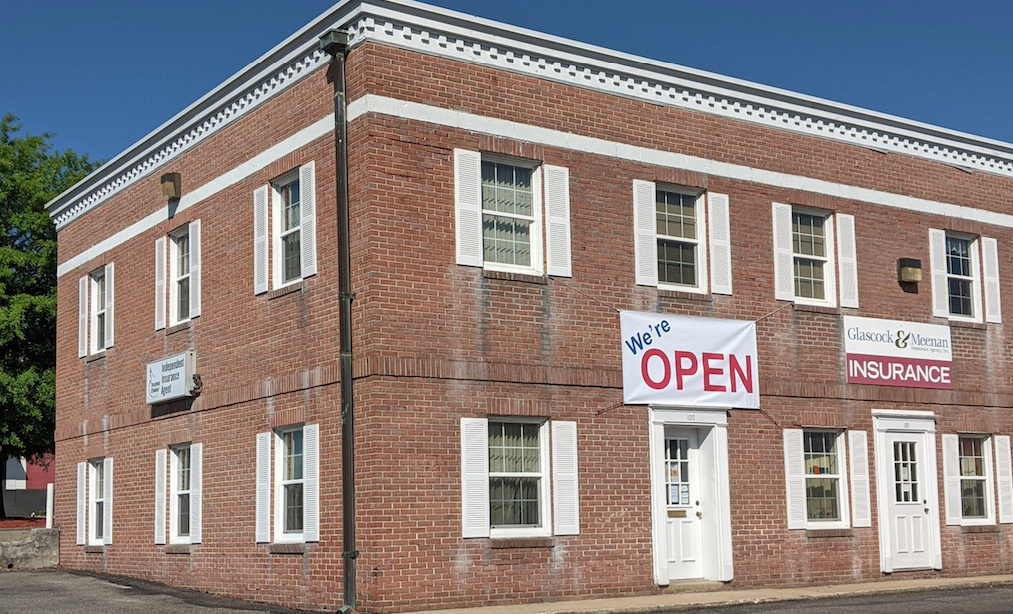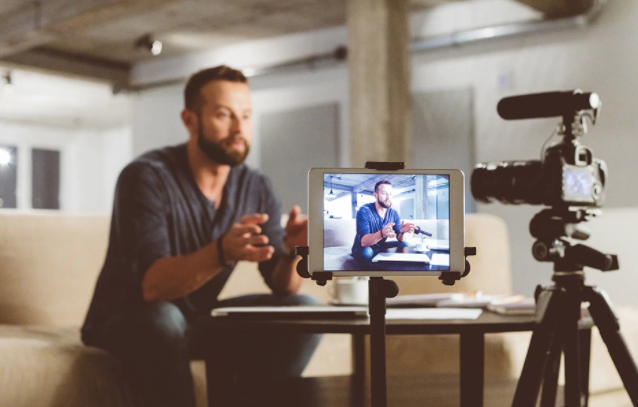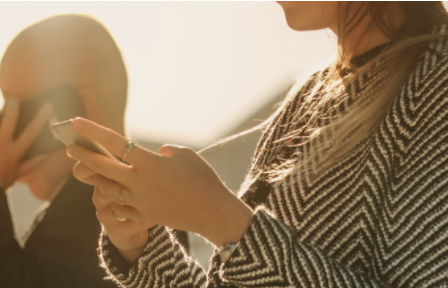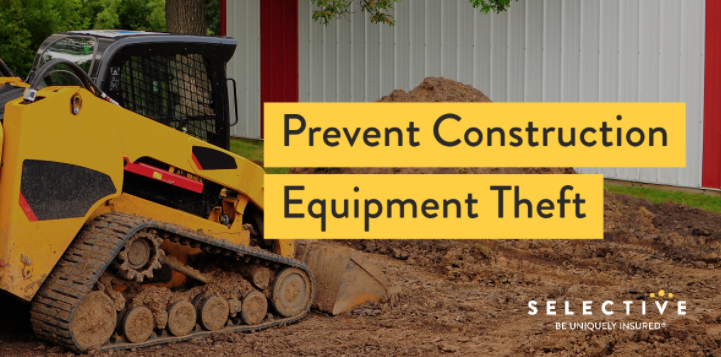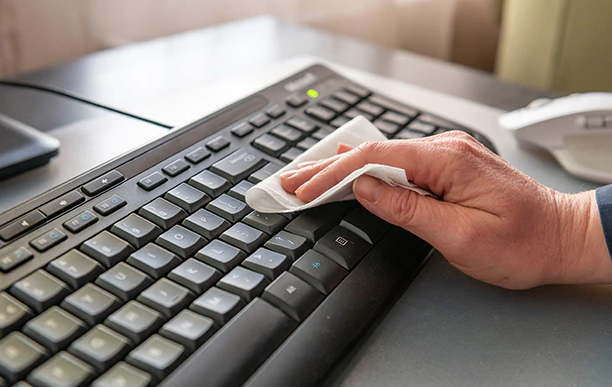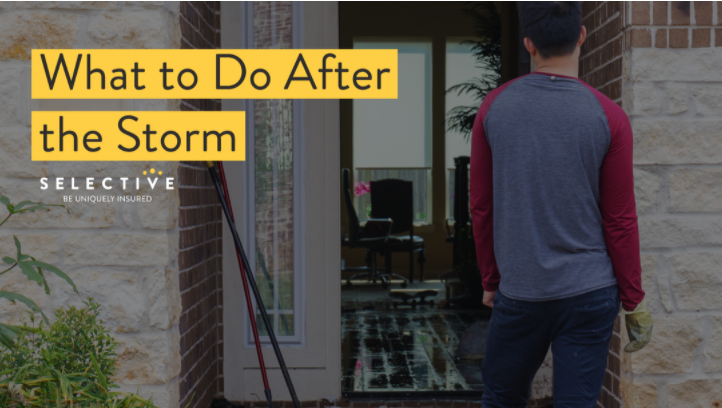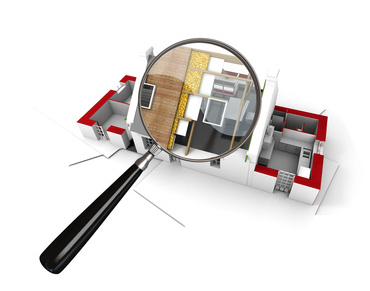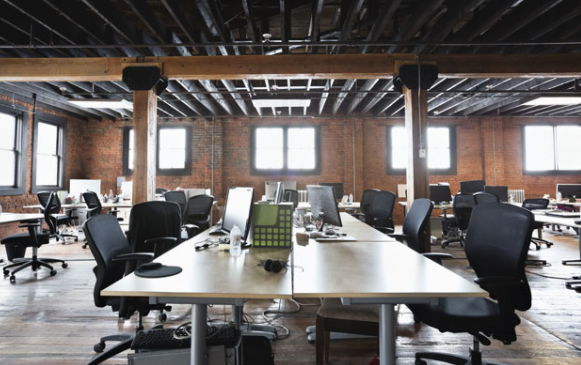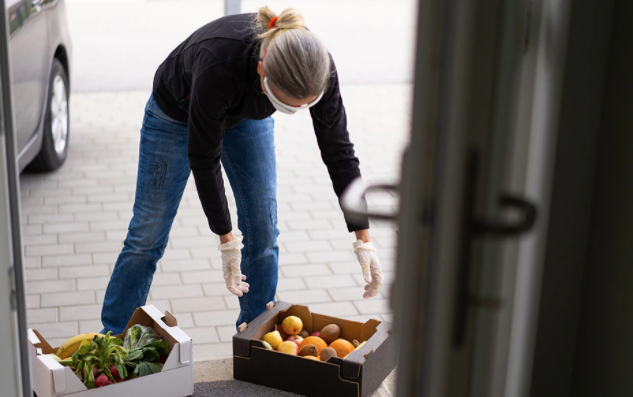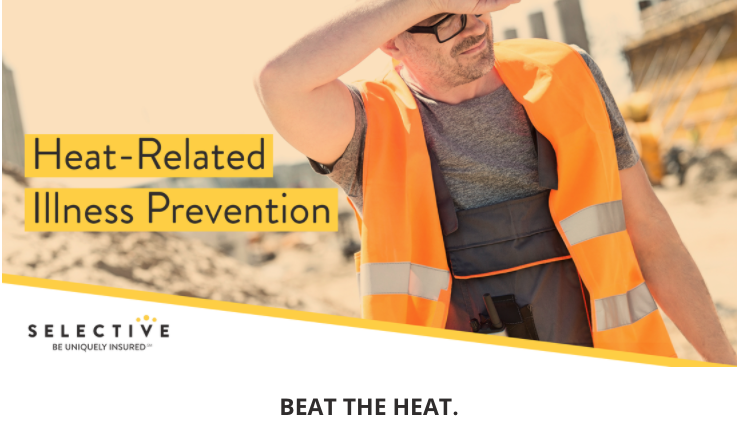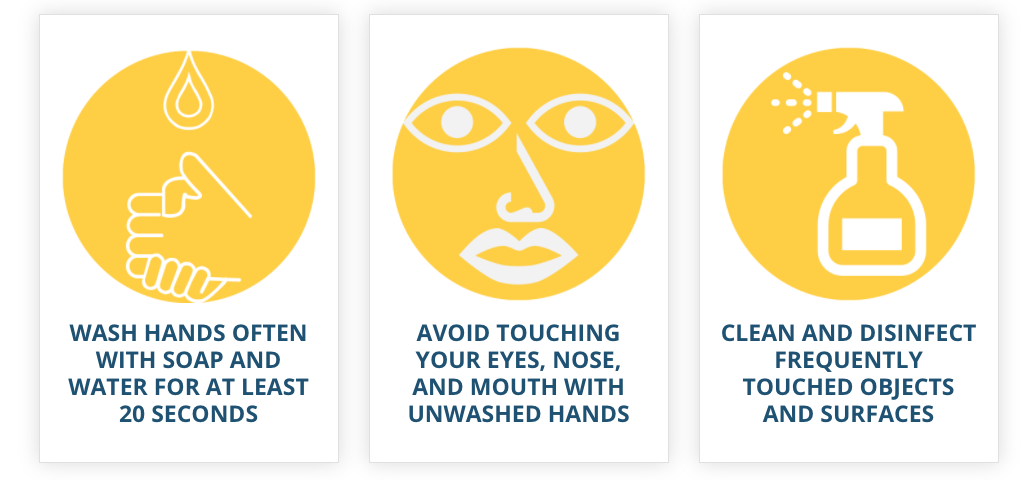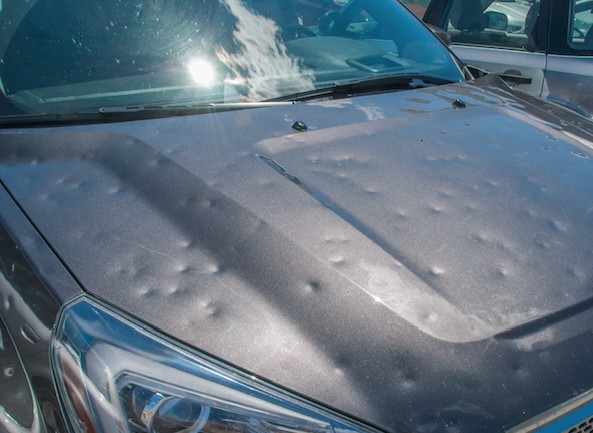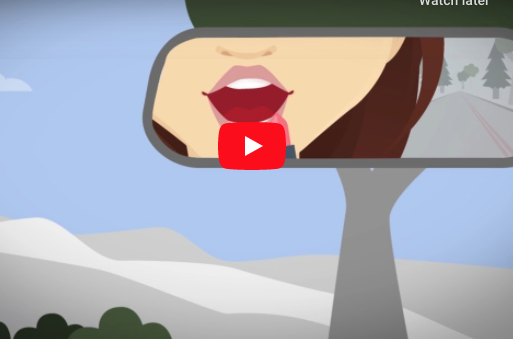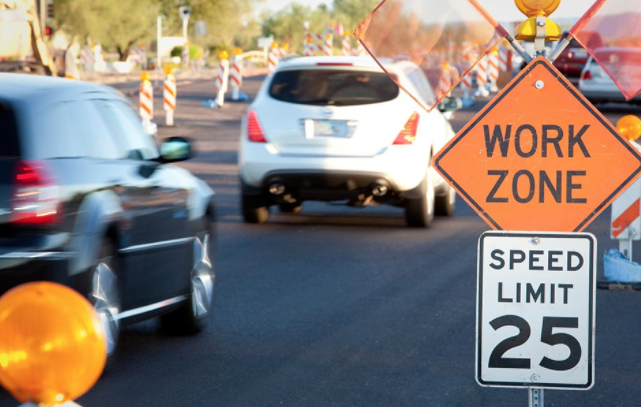Preventing Slips, Trips and Falls in the Workplace
Slips, trips and falls have the potential to be a major cause of injury for your employees and visitors to your premises. There is a common misconception that slip and fall injuries “just happen” and that there is little that can be done to prevent them.
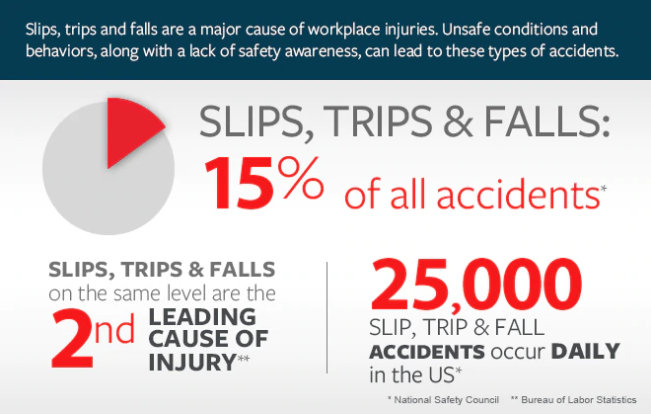
The potential for slips, trips and falls can be widespread, but it is important to understand where, on your premises, the greatest potential for danger lies.
Some hazards associated with slip, trip and fall injuries include:
- Slippery surfaces, such as a gloss-finished tile, polished stone, etc.
- Holes or broken surfaces.
- Uneven walking surfaces.
- Poorly marked and/or poorly lit walkway transitions.
- Wet surfaces caused by spills or poor drainage.
- Slippery conditions due to mud, ice or water during inclement weather.
Creating a Safe Passage
Routine inspection and maintenance should be a regular part of your safety program to help prevent falls for both your visitors and employees.
- Design your entrances and walkways to accommodate the expected volume of foot traffic through your business.
- Conduct periodic walkthrough surveys of your premises to help ensure your property is kept in safe condition.
- Ensure all walkways are properly lit.
- Maintain all flooring surfaces at all times.
- Use slip-resistant floor treatments, especially in areas proven to be wet.
- Apply floor treatments to manufacturer’s instructions.
- Use “wet floor” signs to warn of known hazards.
- Schedule maintenance of floor surfaces during times of low traffic.
- Have spill cleanup supplies readily available.
- Ensure that entry areas are properly maintained and any mats are secured.
- Promptly investigate incidents, and document findings if an accident and/or injury occurs. Read Full Article
Breweries and the Craft of Managing Risks
Craft brewers can spend hours in search of that perfect balance of hops and malt, sampling new ingredients and dreaming up the next distinctive signature beers. Part art, part science, and all passion, many craft breweries are growing into larger operations, adding taprooms and expanding their distribution. Beer trails that attract a growing base of ardent consumers are putting once-obscure breweries on the map.
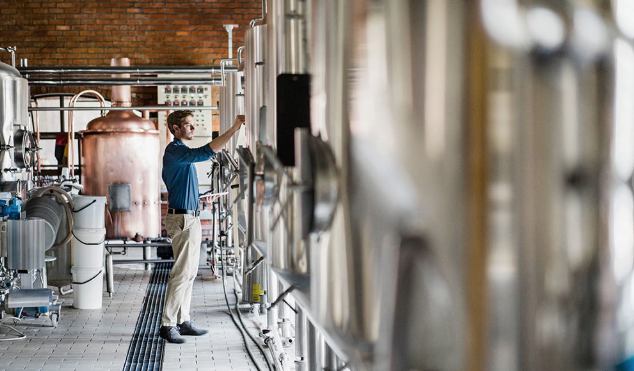
There were more than 6,200 craft breweries operating in the U.S. in 2017, double the number from four years earlier.1 While homegrown brewers may understand what goes into making a quality brew, they may be unaware of some risks that their growing craft breweries face, according to Reese Cann, a Travelers Risk Control Liability Specialist, who works with craft brewers on identifying and managing risks, from hosting special events to handling product recalls.
“Brewers typically understand how important it is to have clean tanks and production lines because the impact can be immediate and spoil an entire batch,” Cann said. But there are other risks to consider. Master brewers can quit a brewery with a popular beer recipe in tow if contracts are not in place to protect the brewery’s intellectual property. Lack of proper liquor liability training can lead to the brewery being sued if, for example, an overserved patron causes a car accident.
Protecting Your Brewery as it Grows
Heath Kidd, Travelers’ Food Manufacturing INDUSTRYEdge Manager, says that craft breweries need to practice diligence as they expand from a homegrown company. This includes being aware of changing food safety regulations. For example, the FDA’s Food Safety Modernization Act focuses on preventing foodborne illnesses and brings breweries under FDA regulation for the first time.
Food facilities are required to have a food safety plan in place that includes hazard analysis and risk-based preventive controls (HARPC) to minimize or prevent identified hazards.2 In addition to these risks, craft breweries also face more common business risks, including premises liability, fire, theft and equipment breakdown. Read Full Article
New Car Replacement Coverage
If you total your new car in the first five years, Premier New Car Replacement® coverage pays to replace it with a brand new car of the same make and model. Many other insurers offer coverage for just the first two or three years.

What Does Premier New Car Replacement Cover?
Premier New Car Replacement is a coverage package designed to replace your new vehicle with a brand new vehicle of the same make and model if yours is totaled in the first five years of ownership.
New customers who already had new car replacement coverage may also purchase this coverage, as long as the vehicle is less than five years old and the customer is the original owner.
This coverage includes:
New Car Replacement Coverage
This covers the cost of a new car of the same make and model, minus the applicable deductibles if your car is totaled in a covered loss. Fire, theft, larceny and flood losses are excluded. Read full Article
What Does Loan or Lease Gap Insurance Cover?
What Does Loan or Lease Gap Insurance Cover?
The value of a vehicle depreciates the minute you drive it off the lot. If you are financing or leasing your vehicle and it gets totaled in an accident, you may owe more than the vehicle is worth (which is the maximum amount you can recoup from basic auto coverage).
Loan/lease gap coverage pays the difference between the actual cash value of your vehicle and the unpaid balance on your loan or lease if your vehicle is totaled due to a loss covered by your comprehensive or collision insurance. For instance, if your car is worth $10,000 at the time it gets totaled in a covered incident, but you still owe $15,000 on your loan or lease, loan/lease gap coverage will pay off the remaining $5,000 so you don’t have to settle the balance out of pocket.
Loan/lease gap coverage does not cover carry-over balances, lease penalties, overdue payments or extended warranties. Also, you must be the original owner of the financed or leased vehicle, and the car must be purchased from a new car dealer — not a previous owner — to be eligible for this coverage.
What Is Collision Insurance Coverage?
If you hit another car or object, get hit by another car or object, or your car rolls over, collision coverage will help cover damage to your vehicle, up to the policy limit.
The maximum collision coverage payout is the actual cash value of your vehicle, minus the deductible amount you choose. Be sure to choose a deductible with an out-of-pocket expense you can afford.
You must have comprehensive coverage to purchase this protection. Collision coverage limits and deductibles may vary by state, and is generally required if you have a loan or lease on your vehicle. Otherwise, coverage and limits are optional.
The Impact of Flooding

Flooding can be a devastating natural disaster and, unfortunately, one that is only too common. There’s no good place to live to avoid floods. Any place that gets even rainfall is at risk for flood damage.
The impact of flooding goes beyond simple property damage. Floods can lead to significant economic and social consequences that can last for years. If you live in any area subject to possible flooding, it’s important to understand the risks at hand.
Property Destruction
Property damage and loss of life are among the most serious concerns most homeowners and business owners face from flooding. Floods can cost $6 billion in damage and claim 140 lives annually. And that’s just in the United States. Worldwide, coastal flooding alone accrues costs of $3 trillion or more each year.
Smaller hurricanes and rainstorms – like Hurricane Irene in Vermont in 2013 – can do plenty of damage, including $153 million in state and local costs and $603 million in federal outlays. But, larger weather events, like Hurricane Katrina or Hurricane Harvey, can cause drive up expenses immensely, costing $108 billion and an estimated $65 billion respectively.
Without proper insurance coverage, these costs may be covered by government assistance. But, more than likely, property owners shoulder the financial burden, leaving thousands of families stranded and facing significant costs. Read Full Article
Liability Insurance Coverage
Bodily injury liability and property damage liability coverages provide compensation for injuries to others, related legal expenses and damage your vehicle does to another person’s property if you cause an accident.
What Is Bodily Injury Liability Coverage?
Your bodily injury liability covers the costs associated with the covered injuries you may have caused to other people in that accident and also provides for a legal defense if you’re sued. Bodily injury liability covers injury to people, up to the policy limits. Read More
Uninsured/Underinsured Motorist Insurance Coverage
It’s scary to realize that some drivers on the road either have no insurance or don’t have sufficient coverage. Uninsured/underinsured motorist coverage can offer protection if you’re in an accident with one of those drivers.
As long as you’ve chosen sufficient limits on the policy, uninsured/underinsured motorist coverage can cover your medical bills and bodily injury resulting from an accident with someone who does not have sufficient insurance.
Coverage extends to you, your family and your passengers. As a pedestrian, if you are hit by an uninsured driver, you can be covered.
The requirement for uninsured motorist coverage varies by state. In most states, it applies only to bodily injury coverage, but where available, you can usually add uninsured/underinsured motorist property damage coverage to your policy as well.
Ask your Travelers representative about the coverages available in your state. Read more
Staying Safe Around Heavy Equipment

Every year heavy equipment operators, ground workers and pedestrians are injured or killed by heavy mobile equipment used in construction. Many of these incidents are the result of rollovers or by individuals being struck or crushed by equipment. In fact, “struck-by” deaths are one of the construction industry’s “Fatal Four” leading causes of death on the job site—of which 75% involve heavy equipment.1
Several conditions can contribute to struck-by injuries and fatalities, including:
- Falling materials and loads.
- Equipment operator blind spots.
- An operator dismounting and leaving equipment in gear, or not setting the brakes or wheel chocks.
- Equipment tip-over or rollover.
- Equipment or controls not locked out during maintenance.
Administrative Controls
While the best way to stay safe is to stay aware, contractors can help reduce the dangers and help minimize injuries and fatalities associated with heavy equipment by incorporating a few administrative controls at the job site.
Pre-Planning and Safe Work Practices
When pre-planning your projects, consider these measures to help reduce the risk of injuries when working around and using heavy equipment:
- Use trained and, where required, certified equipment operators and spotters.
- Provide heavy equipment hazard awareness and safe work practices training to workers.
- Provide a copy of/access to the operating manual for machinery to the operator.
- Develop a path site plan for vehicles, heavy trucks and deliveries to help avoid or limit vehicles and equipment backing up.
- Set up a limited-access zone or swing radius around heavy equipment.
- Provide equipment with rollover protective structure (ROPS).
- Maintain equipment to be in good operating condition.
- Before any equipment maintenance is performed, utilize lockout/tagout procedures.
- Provide a cab shield or canopy worker protection for top-loading vehicles.
- Increase visibility and lighting for night work. Read More
Protecting Your Construction Site from Fire, Water and Theft

Long after the workday ends, risks continue at construction sites, as fire, theft and water can cause significant property damage and can potentially delay project timelines and impact budgets. The presence of combustible materials, the lack of effective security controls and unstable structural elements can make sites more vulnerable to loss. Buildings under construction or renovation are particularly susceptible because they are unoccupied with portions unprotected from inclement weather. This increased risk, along with daily changes in construction activities and building progress, presents a unique challenge to those in charge of managing site protection.
Fire Risks and Controls
As mentioned above, buildings under construction have a greater potential for significant property damage from fire, especially before fire suppression systems are installed and operational. Secure site access by fencing the area to avoid vandalism and other losses. These guidelines can help reduce the risk of fire on site.
- “Hot work” – cutting, welding and grinding. Many construction fires are caused by the improper use of torches for cutting, soldering, roof work, blazing and welding. Contractors should develop and enforce a formal, written, hot-work permit system with all trades and subcontractors based on NFPA 241, Standard for Safeguarding Construction, Alteration, and Demolition Operations.
- Smoking. Careless smoking is a leading cause of fires. To reduce the chance of fire, smoking should be prohibited inside any building, outside in the vicinity of combustible materials and fuel storage, and strictly enforced. ”No Smoking” signs should be posted at all points of entry. If smoking is allowed, it should only be permitted in designated areas.
- Temporary heating equipment. Depending on weather conditions, temporary heat (propane, kerosene or electric) may be used on job sites. If this equipment is not kept clear of combustibles, set up incorrectly or not functioning properly, it can cause a fire. Ensure all heating equipment is listed and approved for its intended use, placing temporary heaters only on non-combustible flooring or platforms and keeping areas around space heaters clear of combustibles. Read Full Story
